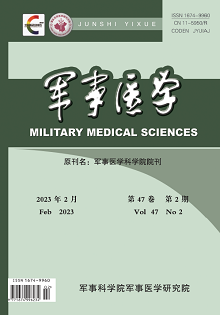Original articles
YIN Yi-xue, JIAO Lu-guang, WANG Jia-rui, REN Zi-qi, ZHAO Yi-long, ZHENG Hong, YANG Zai-fu
Objective To observe the wound healing process of corneal injury of rabbits induced by 1.319 μm infrared laser by means of high-definition optical coherence tomography(HD-OCT). Methods The right corneas of ten New Zealand white rabbits were damaged by near infrared laser at the wavelength of 1.319 µm with corneal radiant exposures of 140 J/cm2. Cross-sectional features of corneal injury, corneal thickness and new corneal epithelial thickness were measured by HD-OCT before exposure and 0, 1, 3, 6, 12, 18, 24, 30, 36, 42, 48, 54, 60, 66 , 72 h, and 7 d after injury. Slit lamp microscopy and histological evaluation of the corneas were preformed pre-exposure and 6 h, and 1, 3, 7 d after injury. Results HD-OCT showed that the corneal lesions induced by 1.319 μm laser involved the whole cornea layer, and that the high-reflectance band in the sites of injury was seen clearly. The corneal thickness increased rapidly with time, and reached the maximum at 18 h before the edema was gradually relieved and subsided. Meanwhile, at 24 h, new epithelium around the injury covered the site of injury completely, and the epithelium thicknesses reached the maximum at 30 h before the thickness returned to normal at 7 d. Slit illumination found that the corneal opacity increased first and then subsided. Histological section showed that at 6 h, the necrotic epithelium and endothelium exfoliated quickly, and that the new epithelial and endothelial cells migrated from the edge of injury to the center of injury. New epithelial cells covered the site of injury completely at 24 h, while new endothelial cells covered the site of injury completely at 3 d. At 7 d, the epithelium and endothelium returned to normal. The chromatin of the injured stromal nuclei disappeared before inflammatory cells infiltrated into the damaged area from the surrounding areas. At 7 d, the edema almost dissipated, but there were still a large number of inflammatory cells. Conclusion The corneas lesions induced by 1.319 μm laser involve the whole cornea layer. The wound healing process includes inflammation and recovery. Corneal edema develops rapidly and subsides slowly. The temporal properties are consistent with the disruption and reconstruction of the corneal epitheliium and endothelium layer.
